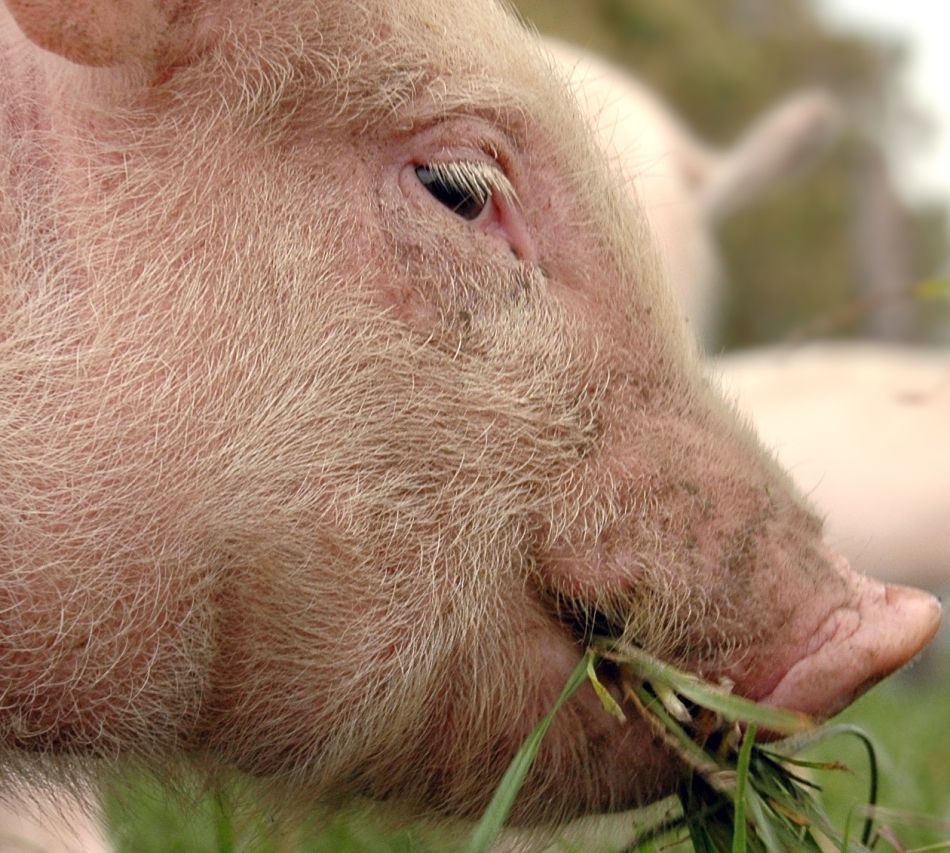pig Facts
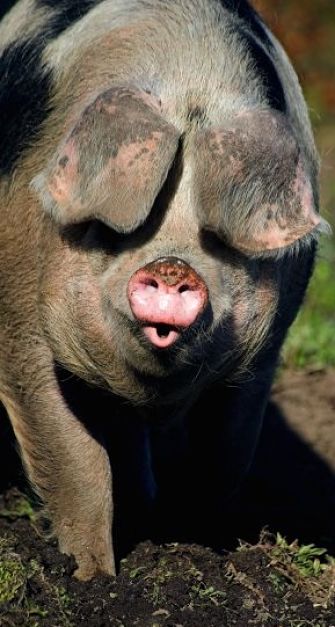 Portrait of a Pig
Portrait of a PigOne of the most useful pig facts is that pigs do not have many sweat glands, so the term "sweats like a pig" is quite inaccurate! All pigs and pig species are descended from a rabbit-sized, plant-eating creature called diacodexis, which could be found about 50 million years ago throughout Europe, Asia and North America.
Today, there are 10 different species of pigs that can be found on every continent except Antarctica, including the amazing looking warthog found in Africa, and the wild boar, also known as the Eurasian wild pig, found throughout much of Europe and Southern Asia.
The domestic pig is a direct descendant of the wild boar, and they can still inter-breed. Among domestic pigs there are about 80 different breeds, most developed for their meat.
Domestic pig species range in size from about 60 pounds full grown, to over 2,000 pounds, and everything in between. There are even species being bred for extreme small size, called "mini" or "micro pigs", claimed to only reach 30 or 40 pounds full grown.
Pigs were domesticated between 9,000 and 12,000 years ago in the Middle East and China. Theoretically, wild boars, which will eat practically anything, were attracted to the garbage created from human settlements. Domestication most likely occurred within communities that were permanent and not nomadic, because pigs, unlike goats and cattle, are not herd animals, and can be difficult to move from place to place.
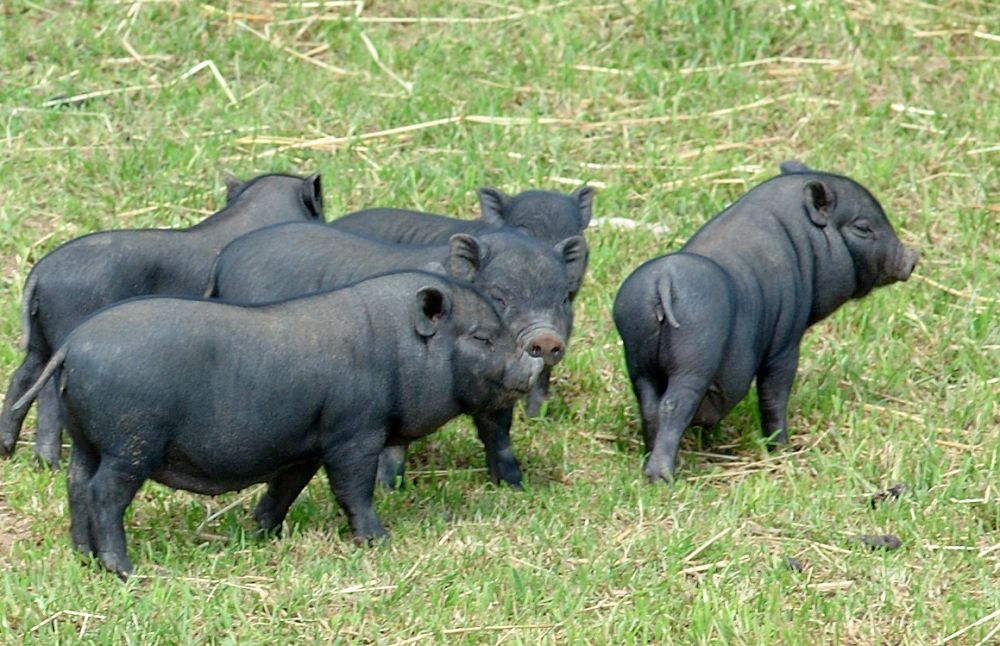 Vietnamese potbelly piglets
Vietnamese potbelly pigletsPigs live in large social groups and enjoy close interaction. When first introduced they will fight for social status, which is usually established within a few minutes or hours. Pigs in the wild are most active at dawn and dusk, and may even be somewhat nocturnal.
Pigs don't ruminate and don't chew cud like cows. They have a single chambered stomach, and require more nutrition than just a grass or hay diet can provide. They will graze on grasses, but they also forage for fungi, tubers, bulbs, vegetables, and an assortment of small insects, reptiles and animals. They search through soil, mud and sand, using their blunt, disc-shaped snout to dig.
They do not actively hunt, but will eat carrion when available, and are opportunistic predators, killing and eating young, small, or injured animals they may come upon, up to and including animals as large as young deer. Feral pig species in Australia have been reported to persue and consume small animals, particularly lambs.
The pig has a reputation for gluttony, sloth and uncleanliness, but if given free range they are active creatures that spend hours and walk long distances in search of food stuffs.
Wallowing in mud is something all pig species enjoy, when the opportunity presents itself, but many pigs live in forest and even near-desert conditions and may go for days without doing so. Wallowing can help regulate body temperature, since pigs can't sweat, but the mud can also act as a sun screen, and a layer of dried mud may reduce bug bites and also remove ticks and other parasites.
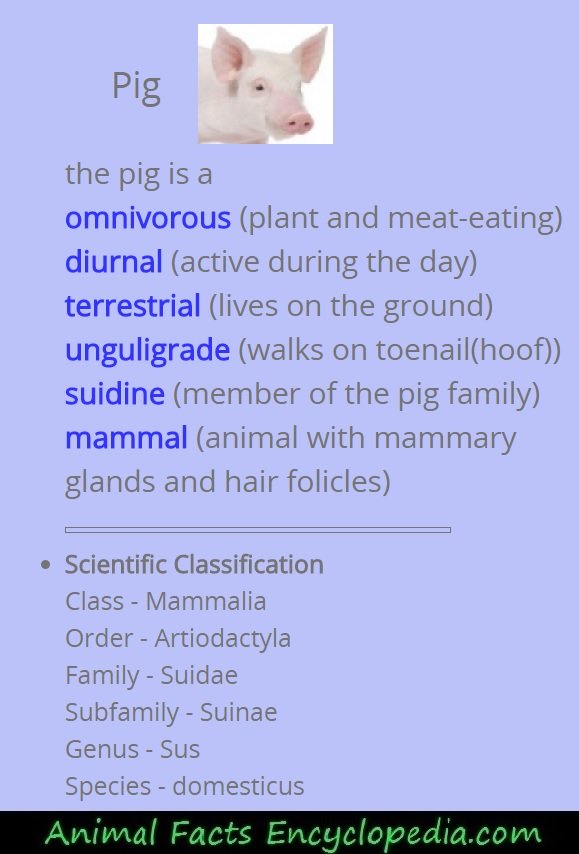
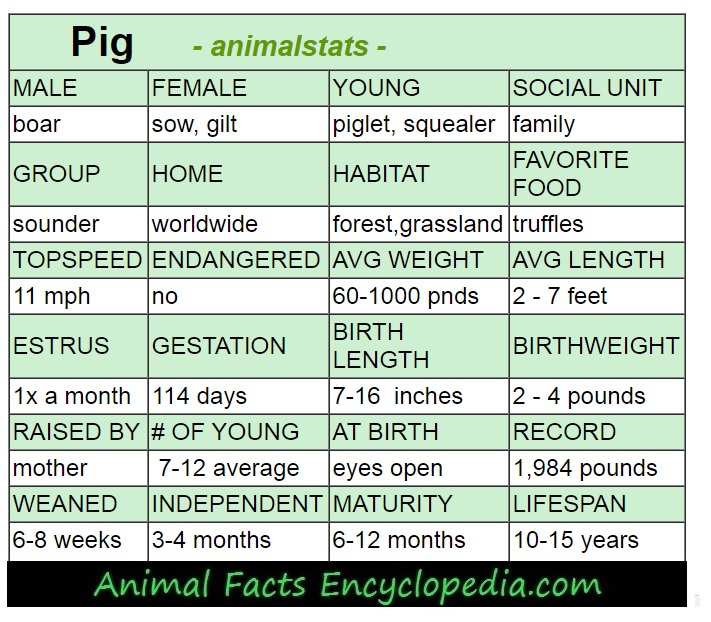
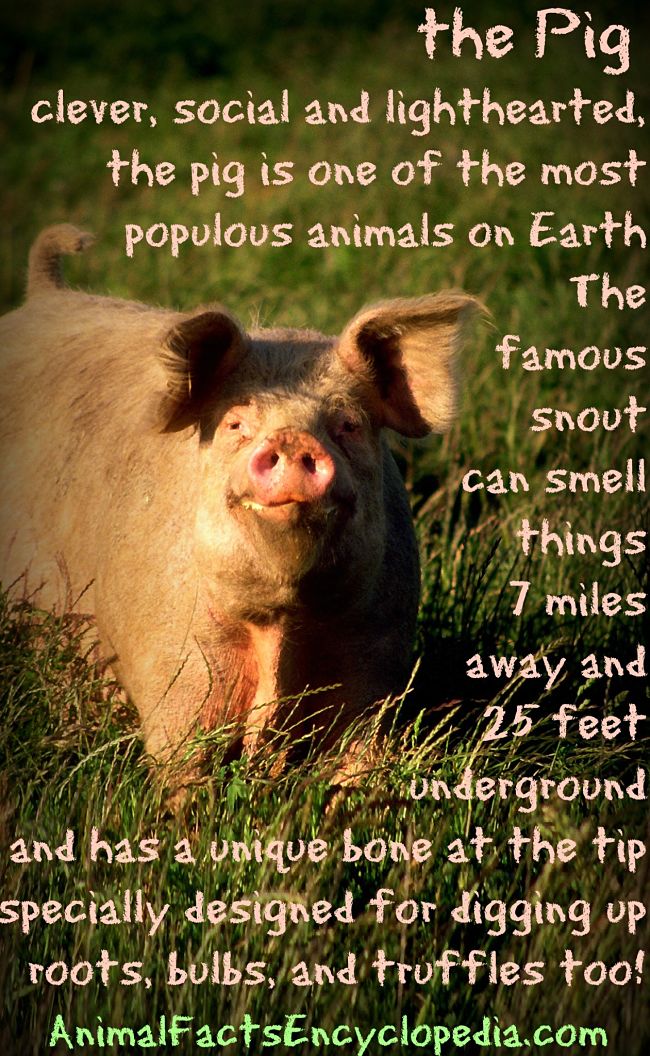
pigs are not smarter than dogs
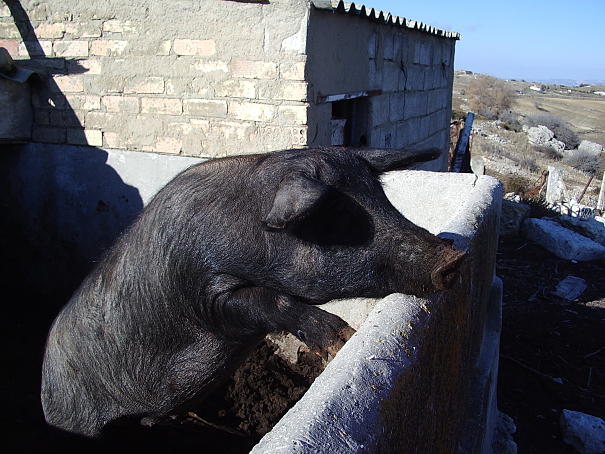
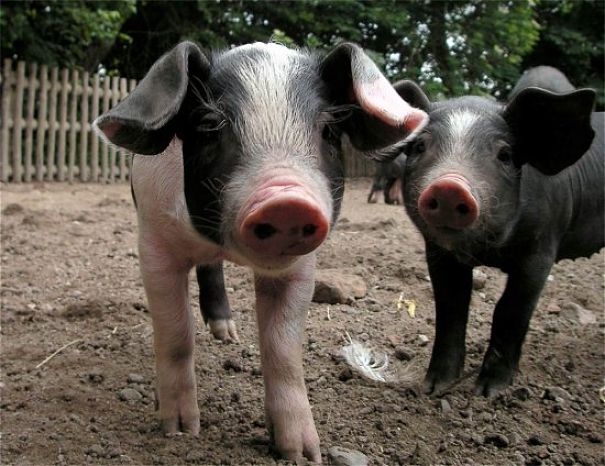
Despite wide-spread reports, pigs are not "smarter" than chimps, dolphins, 3 year olds and dogs.
The source of this suggestion seems to be a study that was done in 1997 by Dr. Stanley Curtis, who ran the department of Dairy and Animal Science at Penn State University. His research addressed practical problems with the care of livestock, but he focused mainly on pigs, which he admitted to being very fond of. Like Temple Grandin, many of his behavior-based approaches were responsible for improved animal equipment and facility designs, and a better quality of life for many farm animals.
The study in question involved whether pigs could use a joystick, manipulated with the snout, to maneuver a cursor on a computer screen. One or more perimeters of the screen would turn blue, and when the pigs moved the cursor into the blue area they received a treat. Only 2 pigs were used in the experiment, and Dr. Curtis himself stated that "the pigs are still far from being very accurate, but the work is promising. If the animals reliably develop the use of this system, down the road I think some really interesting stuff could be coming out of this."
Chimps, bonobos and other apes have been taught to play a variety of actual video games, including Pacman, and will happily play without any food rewards, and with a full understanding of the rules. But anyone who actually believes pigs are as smart as chimps needs to take a look at some of the evidence of chimp intelligence, which is boundless.
As for pig intelligence rivaling that of a chimp or a dolphin, there simply is no evidence.
Check out this peer-reviewed paper, which sites numerous studies.
Though it is often quoted that "pigs recognize themselves in mirrors", there is absolutely no evidence of this, no study that indicates this, and no individual video evidence to support the claim.
If you take a look at the experiments that are supposed to prove that "pigs use mirrors to find food that they otherwise can't see", you will find that the food bowls can in fact be seen, if the pig peeks around the wall, and of course, simply follows its nose.
Yes, pigs can be trained to respond to humans pointing gestures. This was proved fairly conclusively in a 2015 study involving 30 piglets, which is a very reasonable number of subjects. However, researchers found that "the domestic pigs we used in this experiment did not seem to share the spontaneous abilities of dogs to follow the human pointing gesture to find a hidden reward"
Dogs not only understand pointing gestures without special training, they also demonstrate numerous other qualities considered markers of intelligence. Take a guide-dog for example.
When trained to guide the blind, dogs must use their ability to generalize as they apply the skills they learned. In other words, they are trained to safely guide someone across an intersection, and then must apply that skill to hundreds of different intersections during the course of their very productive lives. And they do, every day.
Guide dogs also have to learn to look up, for obstacles that might impact their human, and in doing so must understand the concept of scale, the art of anticipation. Think about that. Once they detect an obstacle, they must solve the problem by re-charting a safe course, and they may accomplish all of this in the middle of a bustling street, with hundreds of distracting sights, sounds and smells.
And although pigs have been used by truffle farmers for years to lead them to the hidden fungus, dogs are now the animal most often employed for the task.
I have personally worked with and handled domestic pigs in a farm situation, pet pigs in households, and one wild boar that had been bottle-fed as a newborn and had appeared in numerous movies and commercials. The boar, named Jonnie, was quite bright, knew his name, would stay on a spot and move on queue, would squeal on command and would play dead with just a hand signal. He was 100% housebroken, and was a very affectionate and thoroughly pleasant animal. He wasn't even close to being "smarter" than a dog, in my humble opinion, in fact, I've known horses, parrots and goats that were at least as intelligent.
Most of the insistence that pigs are smarter than dogs seems to be an attempt to save them from being eaten, and the headlines are just rehashed without any independent verification of the statements.
Ridiculous headlines like "9 ways a pig is smarter than your honor student" found in the Huffington Post. Absurd, completely unsubstantiated claims like "pigs outperform 3-year-old human children on cognition tests and are smarter than any domestic animal, and animal experts consider them more trainable than cats or dogs" - a statement quoted as "fact" on PETA's website, and which appears at the top of Google searches on the subject.
Not wanting these awesome animals to come to harm is perfectly understandable - we love pigs too - but when you create and disseminate misinformation as fact, you may jeopardize your chances of being taken seriously on more important issues.
It is astonishing the number of videos, newspaper articles and even documentaries that make these claims, with no evidence, and no independent verification whatsoever. So I repeat -
Pigs are NOT smarter than dolphins. Pigs are NOT smarter than chimps. Pigs are NOT smarter than dogs.
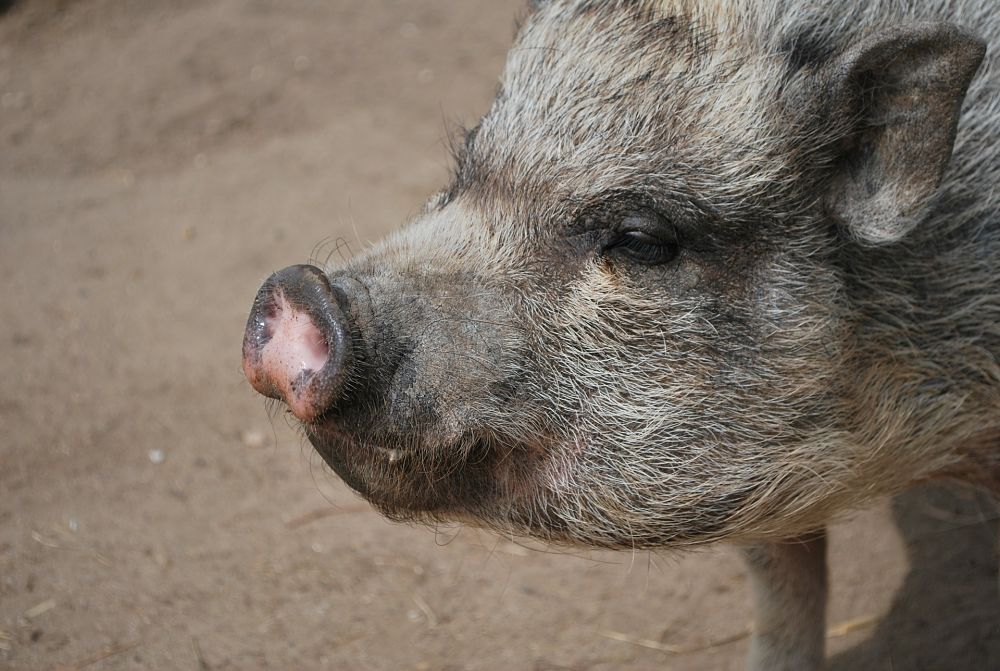 handsome pig
handsome pigpig lifestyle
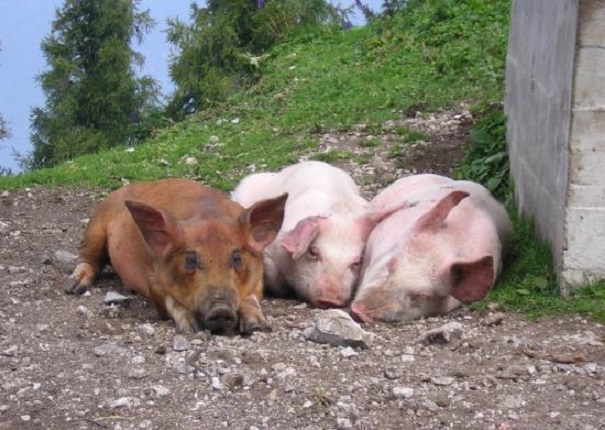
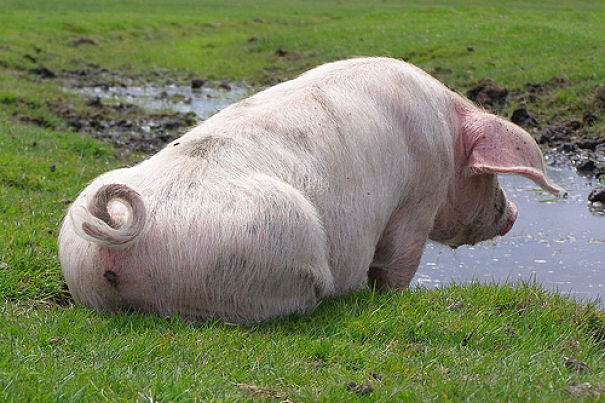
Pigs are social, adaptable, and will eat virtually anything. In fact, throughout China people once employed something called a "pig toilet" which delivered human feces straight to the pig pen for consumption.
Pigs are also called hogs and swine, and anything associated with pigs is often referred to as "porcine".
Pigs have large heads, short necks, barrel-shaped bodies and strangely slender legs. The tail can be straight and held high as in the warthog, or curled and held close to the rump as in most domestic pigs, but the most distinctive feature of the pig is its remarkable snout.
Pigs spend the bulk of their time rooting and foraging for food, which involves them digging in mud, soil and sand for anything edible. The pig has a highly specialized nose just for this purpose. The muzzle ends in a blunted upper lip which is a flexible disc encircling the two nostrils. The disc is made of cartilage and is covered with skin that has a high density of tactile receptors. The nose is also strengthened by the prenasal bone, and can dig right into soil, moving rocks and roots out of the way with ease.
In addition to excavating, the nose can detect odors up to 7 miles away, and also scents hidden deep within the ground. Pigs may smell something tasty 3 feet deep, and dig it up in a matter of minutes.
The ability of pigs to smell through soil encouraged the Israeli military to try to train them to sniff out landmines. The project failed, and the pigs were replaced by giant African pouched rats.
Special pigs known as "truffle hogs", were also employed in France and Italy to sniff out truffles, a rare and expensive mushroom that can sell for $4,000 a pound. Amazingly, truffles produce a scent that mimics the sex hormones of a boar, so female pigs are used to find them.
Smelling like something that a pig wants to find insures the truffles survival, because they need to be eaten by the pig and then spread about in the pigs feces to reproduce. This is a process called mycophagy.
But lady pigs aren't the only ones that find the scent of truffles intoxicating, it is said to be an aphrodisiac for people too. In the last few decades, dogs have started to replace pigs in the task of truffle hunting, because the pigs were quite reluctant to give up what they found.
Pigs are so driven to dig around and search their surroundings that they can get depressed without a stimulating environment. Farmers provide them with straw to shovel through which reduces their stress levels and provides them with hours of interesting activity.
Pigs are extremely vocal while they root about, and have a vast vocabulary of snorts, grunts and squeals. Mothers have specific calls for piglets, pigs make special noises when being fed, while resting together, or while waiting to come in or go outside. They communicate with eachother constantly, and may call to eachother across distances of miles if separated.
The squeal of a pig is said to be almost as loud as a jet engine, and people who work with them in large quantities sometimes wear ear protection to prevent hearing loss.
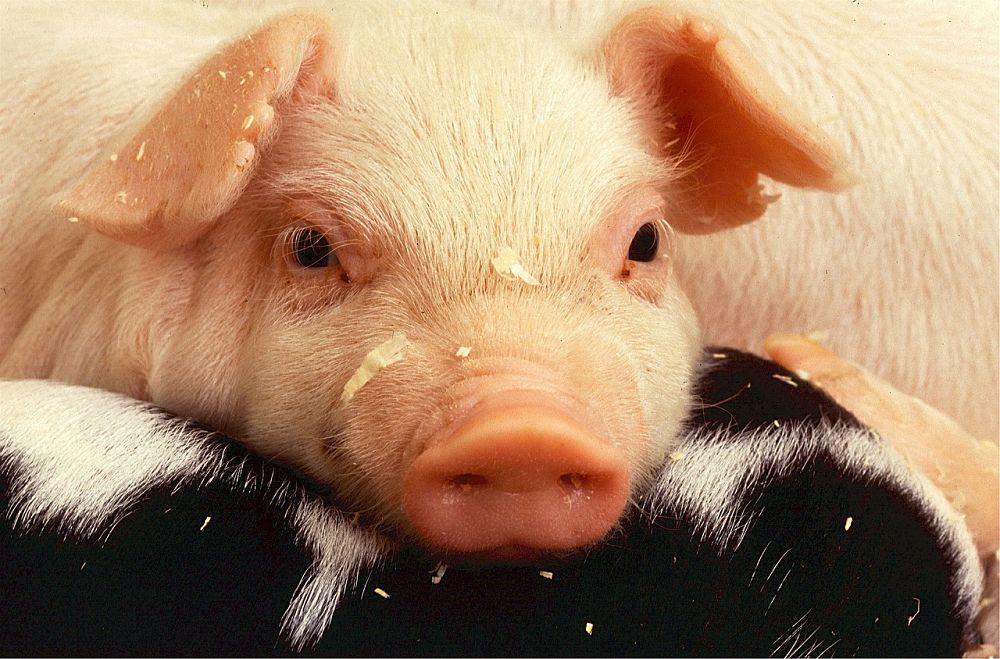 pig!
pig!pig facts on reproduction
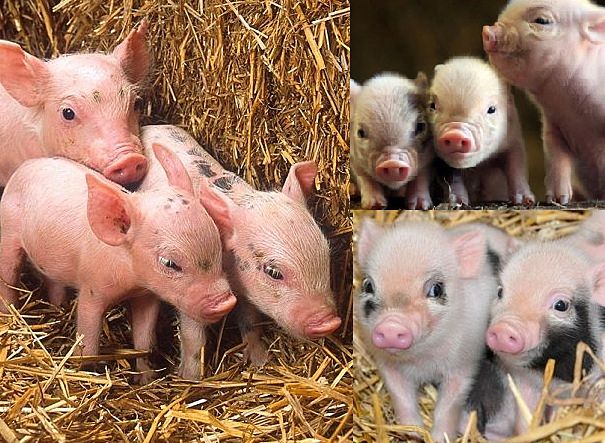
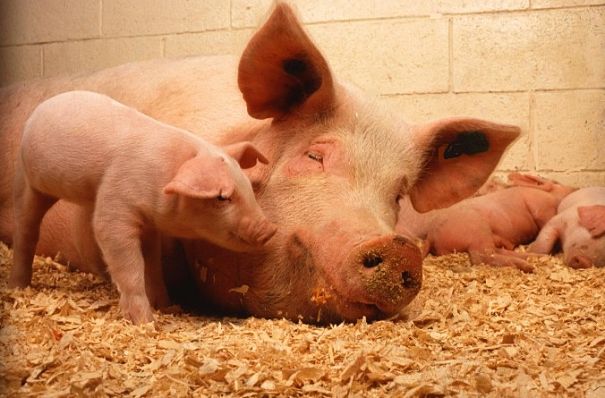 pig mother and baby
pig mother and babyPigs are social animals that live in groups called sounders. A sounder is made up of several mother pigs and their offspring, which may stay with the sounder for life, or in the case of males, will leave in a few years to live alone or in a bachelor group.
Adult males, called boars, generally join the sounder for a few days at a time when females are in season. Female pigs, called sows, or gilts if they are under a year old and have not been bred, have an estrus cycle of about 25 days, and are capable of having 2 complete litters a year.
Most large hoofed mammals, like horses, cows, and deer, have only one offspring, sometimes twins, but pigs have large litters of piglets, averaging between 6 and 12.
The female is pregnant for about 115 days and gives birth, also called "farrowing", lying down, in a nest that she prepares a day before. Piglets are precocious, born with eyes open, stand and walk within minutes, and may leave the family to relieve themselves in the appropriate corner at just a few hours old.
Piglets have "assigned teating" - the first teat they start with will be the one that they always use, and they will fight to get back to it. This is an advantage to piglets at the first 3 or 4 rows of teats, because they actually have the most milk.
There are almost always one or two runts in the litter, and they may be pushed aside by their siblings, which may make their condition worse. Caregivers must regularly remove runt piglets and bottle feed them to insure they survive.
One of the most common causes of piglet death is being crushed by the mother. Sows can weigh many hundreds of pounds, and pigs are not very agile, so bumpers are provided in domestic pig farrowing pens to prevent these losses.
Pigs mature very quickly, can be weaned anywhere from 4 to 12 weeks, and grow at enormous rates, many large breeds reaching over 300 pounds in just their first year of life.
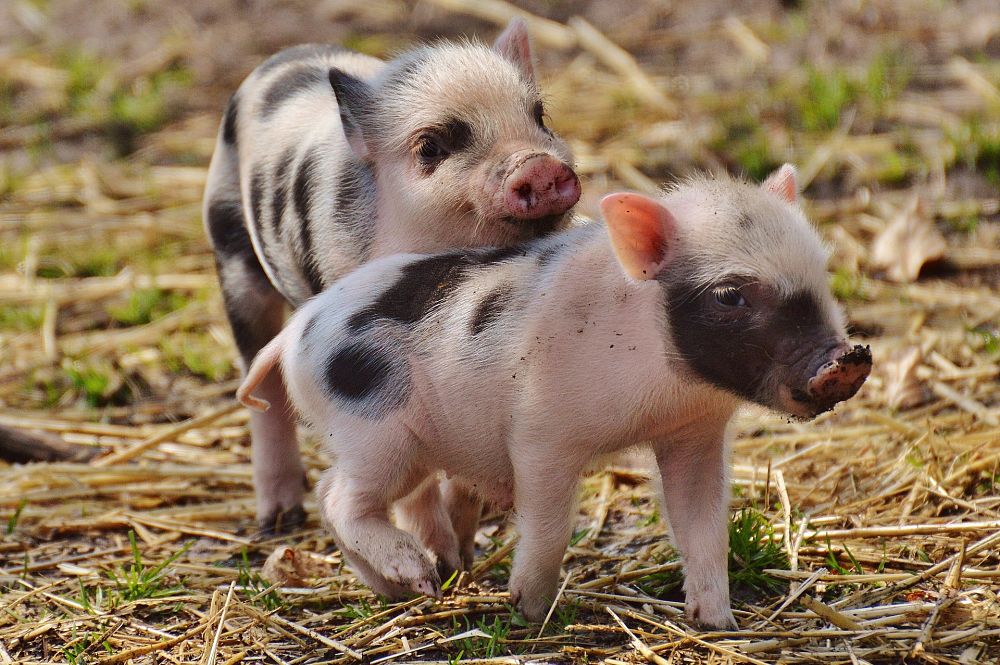

a few more pig facts
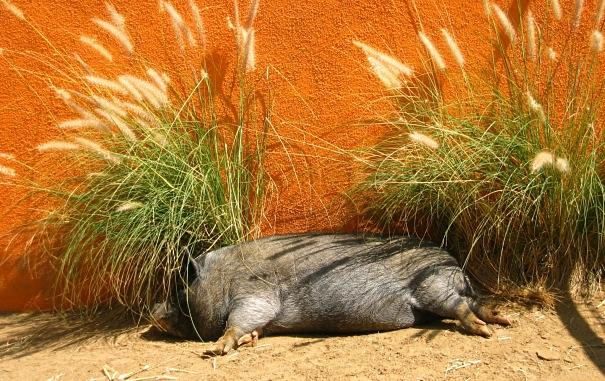
- There are over one billion pigs on Earth
- Pigs can squeal almost as loud as a jet engine
- Pigs can smell things 7 miles away and 20 feet underground
- Pigs do have a few sweat glands, but mostly on their nose
- Pigs use their snouts for digging
- A pigs hooves are called trotters
- Pigs will eat almost anything, including feces
- Ancient Europeans once used pigs to get rid of sewage
Scientific Classification:
| Pig - animalstats - | |||
|---|---|---|---|
| MALE | FEMALE | YOUNG | SOCIAL UNIT |
| boar | sow, gilt | piglet, squealer | family |
| GROUP | HOME | HABITAT | FAVORITE FOOD |
| sounder | worldwide | forest, grassland | truffles |
| TOPSPEED | ENDANGERED | AVG WEIGHT | AVG LENGTH |
| 11 mph | no | 60-1000 pounds | 2 - 7 feet |
| ESTRUS | GESTATION | BIRTH LENGTH | BIRTHWEIGHT |
| 1 x a month | 114 days | 7-16 inches | 2 - 4 pounds |
| RAISED BY | # OF YOUNG | AT BIRTH | RECORD |
| mother | 7-12 average | eyes open | 1,984 pounds |
| WEANED | INDEPENDENT | MATURITY | LIFESPAN |
| 6-8 weeks | 3-4 months | 6-12 months | 10-15 years |
see more animal extreme closeups
Recent Articles
-
African Animals - Animal Facts Encyclopedia
Oct 11, 16 10:27 PM
African Animals facts photos and videos..Africa is a wonderland for animal lovers, and a schoolroom for anyone who wants to learn about nature, beauty and the rhythm of life -
Baboon Facts - Animal Facts Encyclopedia
Oct 11, 16 10:26 PM
Baboon facts, photos, videos and information - Baboons are very distinctive looking monkeys with long, dog-like snouts and close set eyes. -
Great Apes Facts - Animal Facts Encyclopedia
Oct 11, 16 10:25 PM
Great apes facts, photos and videos..Human beings did not evolve from chimpanzees, modern chimps and gorillas do not appear in the fossil records until much more recently than homo sapiens..




















